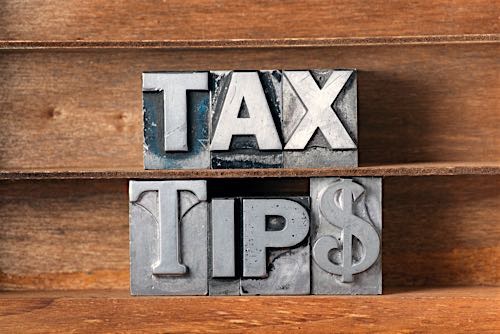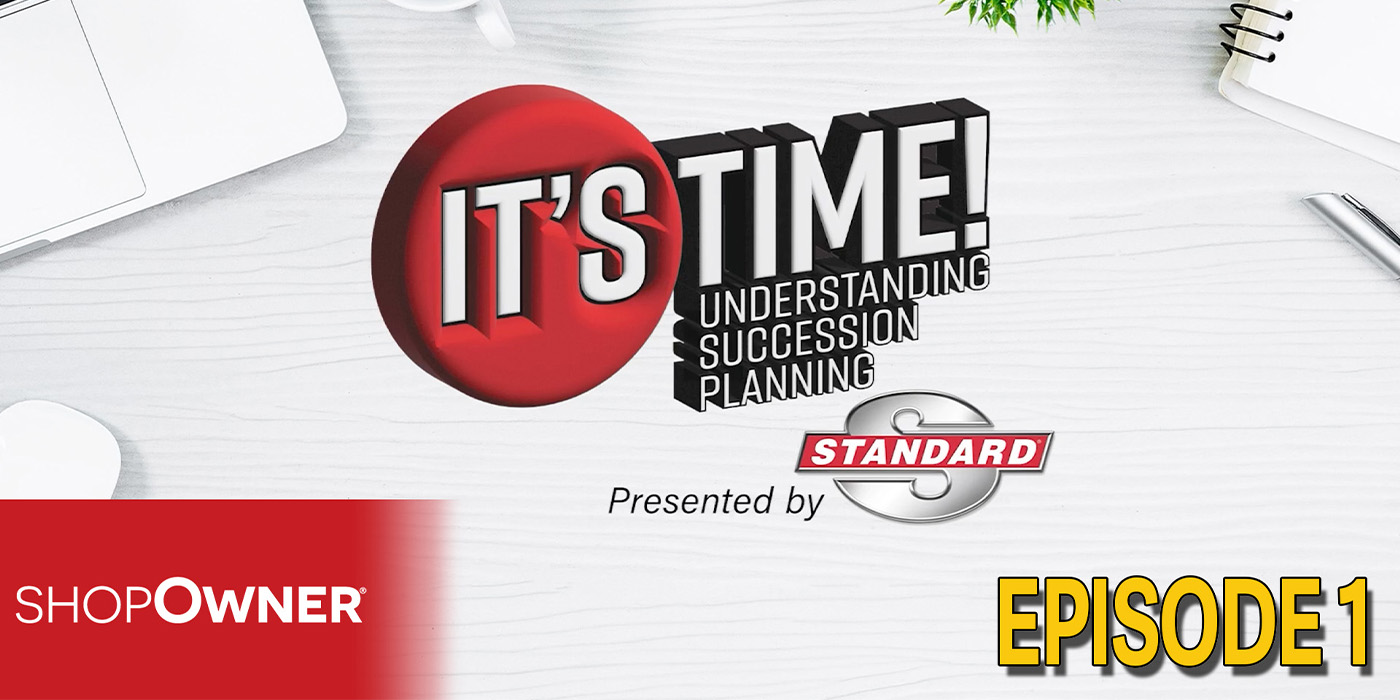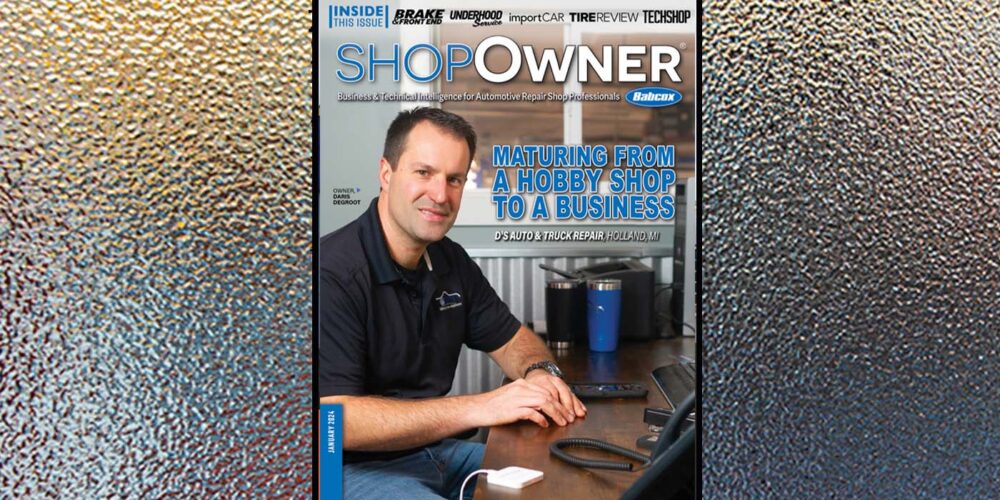
Jim’s Auto Repair and Tire has been a fixture in a Midwest community for 31 years. Jim is now 64 years old and has agonized about when to retire for the past couple of years. The business has enabled him to live a good life despite the ups and downs of the local economy, put his two children through college and spend more time lately on his hobbies.
After spending the holidays with his children and relishing the time playing with his first grandchild, Jim and his wife Sarah have concluded that it’s time to say goodbye to the daily stress of running a business and transition the operation to an energetic buyer. They are hoping that the new political climate will lead to a boost in the economy and inspire more potential buyers who want to be their own boss to seek out businesses for sale. Given the rules of supply and demand, Jim thinks that now is the perfect time to maximize his sale price.
Jim also recognizes that he has not done a very good job over the past couple of years of “dressing up” his books and records to make his business as attractive to buyers as he could have. Most small-business owners accurately report their sales and don’t go overboard in having the enterprise cover personal expenses. However, Jim has not been able to resist the temptation to sock away cash at the expense of Uncle Sam. Having read a few of our articles in Shop Owner magazine, he knows that all of the unreported sales, personal expenses run through the business and use of a “creative” accountant to “tweak” his tax returns to minimize taxes will present a challenge when selling his business.

Jim has resolved to immediately call his accountant and discuss the preparation of his 2016 corporate tax return since he knows that prospective buyers will be valuing his business based upon the net income on the books and other legitimate add-backs. In fact, for every dollar of additional cash flow, most buyers will increase their purchase offer by an extra $2 to $3.
Historically, Jim’s accountant has perfected the art of minimizing taxes, so now Jim wants to make sure that his CPA knows of his intention to sell this year. Since most buyers focus their analysis on the last full financial results, Jim realizes that 2016 is the year to highlight the “true” profitability and maximize the “sellability” of the business. His children have their own successful careers and he does not have an employee capable of making a purchase, so Jim needs to make the business as attractive as possible to an outside buyer. Jim seeks to find a buyer who can grow and expand his legacy, while also receiving a cash settlement that he could safely invest for his retirement.
Jim’s Specific Action Items to Increase the Sellability of the Business
After discussions with his accountant and business broker, a list of concrete steps were documented to improve the appeal of the financials and 2016 tax return and to show positive cash flow growth trends as they report monthly results in 2017:
> Jim committed to bite the bullet and report all sales in 2017. This will result in demonstrating true monthly revenue that can be extrapolated, while also highlighting increases over the comparative monthly sales figures for 2016. Additionally, it will result in increased gross profit margins on the monthly P&L in 2017, as the parts and tire costs associated with the unreported sales in 2016 were included in the 2016 P&L reports.
> Jim will discontinue his past practice of paying some bonuses to employees in cash, as this practice can create disclosure, legal and other issues when selling a business.
> Unlike prior years where Jim’s accountant artificially “tweaked” the ending inventory value on the tax return to increase the cost of goods and decrease the profit, this practice will not be employed on the 2016 tax return.
> Jim will reach out to his suppliers to return slow-moving inventory items and replace them with fast-moving items to increase inventory turns and potentially lower the total inventory value.
> The prior practice of burying personal expenses that cannot be documented will not be employed on the 2016 tax return. Personal expenses that can be documented and other fringe benefits will be recorded clearly so that they can be added back to cash flow when the broker recasts the financial statements. Supporting documentation will be copied so that it can be made available for buyer or bank due diligence.
> Jim will identify records of parts and tires that were purchased by the business and installed on his classic car and vehicles of friends and family.
> Jim has only six years left on his lease, so he will talk to the landlord and request an amendment to add additional renewal options, as buyers and banks want a minimum of 10 to 15 years remaining on a lease.
Creating an action plan to properly prepare your business for sale is the first step toward increasing its sellability. A 2016 tax return that shows a reasonable amount of “ordinary business income” is the starting point for calculating the true owner benefit of buying the business through a process that brokers call “recasting.”
Recasting: Because a Buyer is Buying His Future, Not Your Past
One of the biggest mistakes a seller can make is simply providing a buyer a copy of the business tax returns or unadjusted financial statements. If you want buyers to get excited about your auto service business, they need to truly appreciate the full financial benefit and actual income-generating ability. By “recasting,” or adjusting the financial statements for presentation purposes, the “real” financial performance of the business can be demonstrated.
A “recast financial statement” is a reconstructed representation of the earnings that a buyer would be able to enjoy from the business. It “normalizes” the figures by removing all the unusual, non-recurring and one-time items that would not likely occur in the future for the buyer. Recasting supplements the owner’s compensation listed on the tax return with all other perks or fringe benefits, while also adding back depreciation, amortization, interest payments and capital investments in equipment or property improvements.
Recasting financials before selling a company may raise eyebrows for those who have not heard the term before. However, just as a homeowner “stages” their house before putting it on the market, you will want to legitimately dress up your business financials. You certainly can work to improve your shop’s physical appearance, but you also should make the numbers look as attractive as possible. After all, those cash flow numbers will be a crucial element in determining how much buyers are willing to pay for your business and how much money that a bank will be willing to lend to the buyer.
Case Study
For example, let’s assume a buyer is looking at two similar auto service companies for sale. Both are generating similar levels of revenue.
Seller A gives the buyer a 2016 tax return showing $50,000 in ordinary business income and $75,000 in officer salary. Thus, Seller A is disclosing $125,000 for this year in seller’s discretionary cash flow.
Seller B has his broker prepare a detailed marketing package including three years of recasted financials documenting $250,000 in seller’s discretionary cash flow.
Which of these sellers do you think will receive a better offer? With this example, you can see how vital recasting is in protecting you from offers that are too low.

Recasting Checklist
The most important recasting adjustment is to clearly document the “owner’s benefit,” including all perks and personal expenses that may be run through the business.
Every business and situation is different, but in Jim’s case, it was appropriate to add back the following expenses:
> All health, disability and life insurance premiums and company contributions to his retirement account;
> Jim’s wife’s salary for part-time administrative work which could be done by a buyer;
> Jim’s nephew’s wages since his occasional work cleaning up around the shop was not essential to the business;
> The cost of Jim and his family’s cell phones, personal vehicle and maintenance expenses that were run through the business;
> Parts and tires purchased by the business to fix up Jim’s classic 1968 Corvette and to work on a few of his neighbors’ cars that were not invoiced since Jim kept very careful records documenting the outside purchases;
> Travel and entertainment expenses for trips to their Florida condo;
> Legal and accounting expenses paid by the business for Jim’s new will and estate planning services;
> Training and seminar expenses for Jim’s automotive business coach; and
> A new security system installed at Jim’s house and his personal iPad.
In addition, other recasting actions could include adding back:
> Depreciation and amortization;
> Interest payments on the business bank loan;
> One-time cost of a major write-down in inventory to remove obsolete parts and expired tires;
> Lease payments for their alignment system since the small remaining balance could be paid off at closing;
> The purchase of a new lift, including installation, and a brake lathe that were expensed in full by the business in 2016; and
> Charitable donations and certain advertising/sponsorship expenses that would not benefit the business.
You Are Not Trying to Mislead Buyers
The goal is to make the potential cash flow of your business clear to a buyer, their accountant and their bank. But be prepared to justify all add-backs with supporting documentation, such as invoices and payroll records. Most buyers and their accountants will demand a due diligence period to verify all claims.
A good broker will orchestrate this process by anticipating the questions and being prepared to quickly respond.
When it comes to maximizing the sale price, don’t leave money on the closing table by not spending the time and energy with your accountant before he/she prepares your 2016 tax return. Your retirement income and peace of mind is dependent on recouping all of the value you put into building a successful enterprise.
Note: Jim’s Auto Repair and Tire is a fictional business entity. This article is presented in part to illustrate how manipulating the books and records to save on taxes can create problems when it is time for an owner to sell a business. Neither the author, or Shop Owner Magazine, recommend that any of the tactics to minimize taxes be employed by a business owner. Suggestions contained in this article are for illustrative purposes only and not to be interpreted as tax or business advice. The reader is cautioned against implementing any of the suggestions without first consulting with an accountant.












